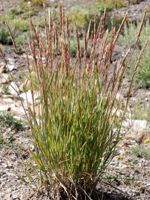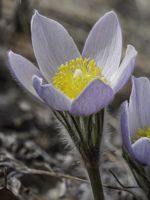Mon-Fri 9am - 5pm Mountain time
Slender Wheatgrass vs Prairie Crocus
Elymus trachycaulus
Pulsatilla nuttalliana (Anemone patens)
CUSTOM GROW
NOT AVAILABLE THIS SEASON - MIGHT RETURN
Slender Wheatgrass is a native perennial bunchgrass common across North America. It establishes quickly, making it effective for site recovery.
It produces upright seed heads that provide seasonal interest and seed for wildlife, and favoured for browsing by elk and sheep. Its seeds are eaten by birds and small mammals, and it provides cover for wildlife.
Slender Wheatgrass is among the first native grasses used for reclamation in western Canada and the U.S. It does exceptionally well in saline soils.
Prairie Crocus is a native perennial wildflower that is often considered one of the first signs of spring. The flowers can range from purple, pale blue, to white and often appear before the snow has fully melted. It can bloom a month earlier than other spring flowers, providing an early source of pollen for a variety of pollinators.
The plant is covered in woolly white hairs, including the finely divided leaves, giving them a silvery appearance. Prairie Crocus leaves do not fully emerge until after it has bloomed. The spent blooms transform into fluffy, feathery seed heads. During the hot summer months, the Prairie Crocus goes dormant and will repeat its life cycle the following spring.
The Prairie Crocus is Manitoba’s provincial flower.
Slender Wheatgrass Quick Facts
Prairie Crocus Quick Facts
Toxicity: all parts toxic if eaten, sap can irritate skin

